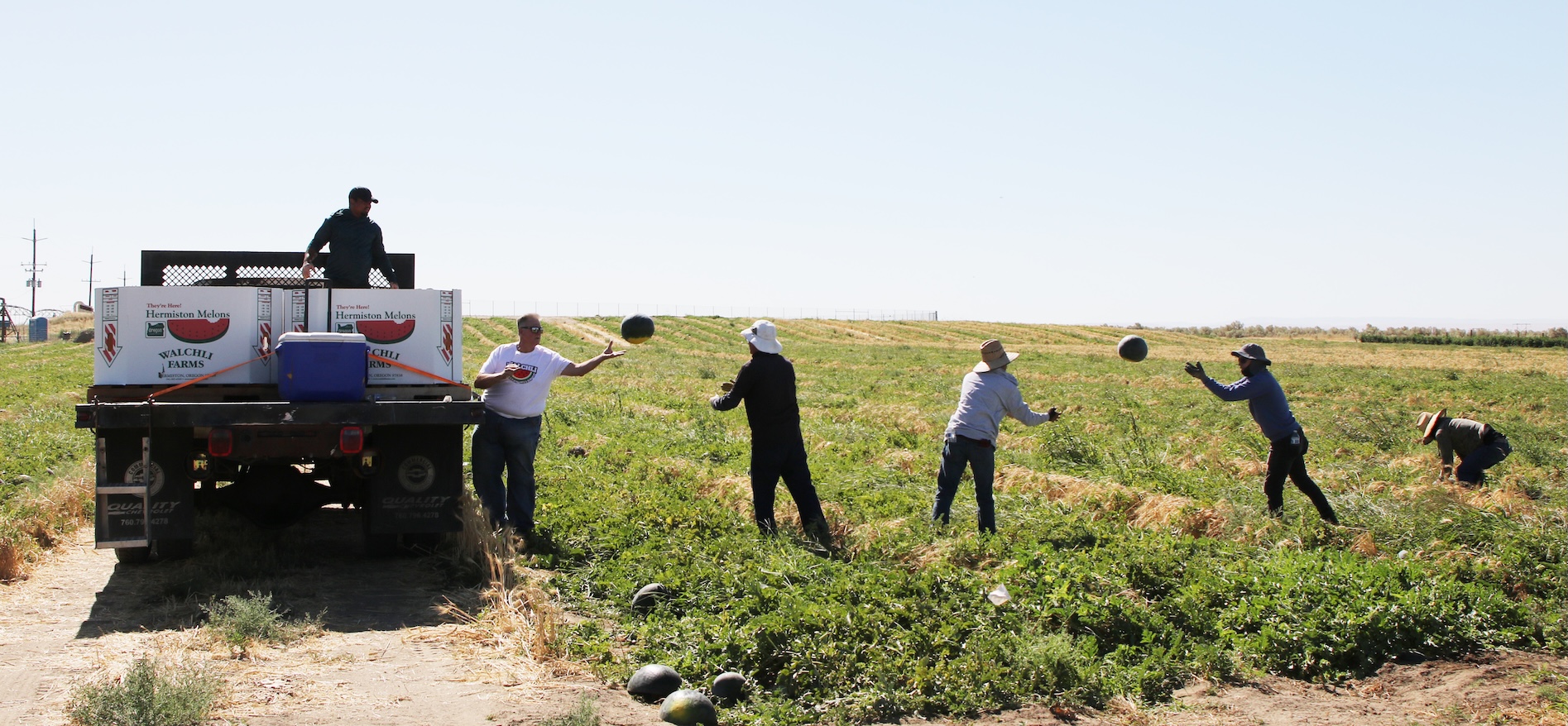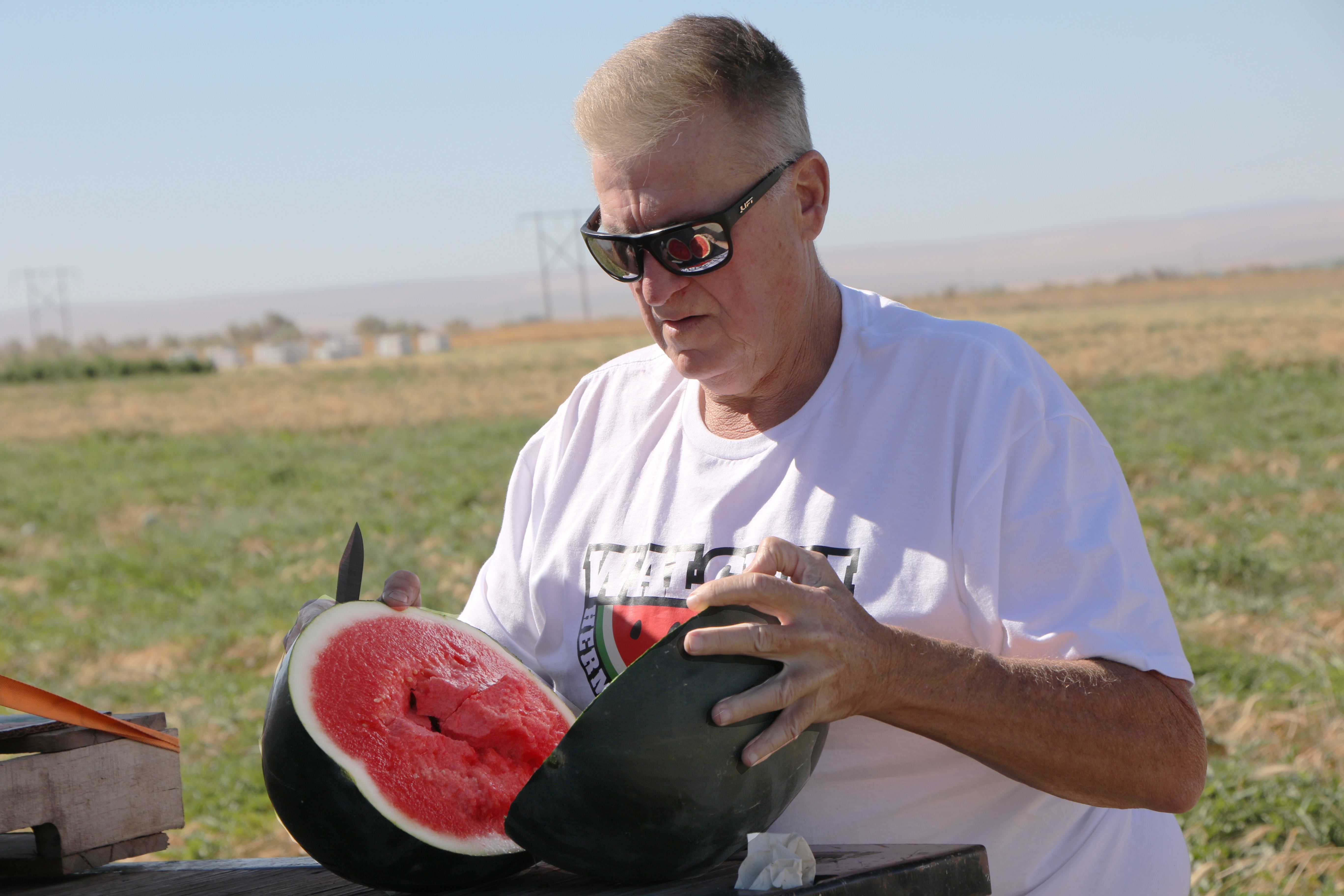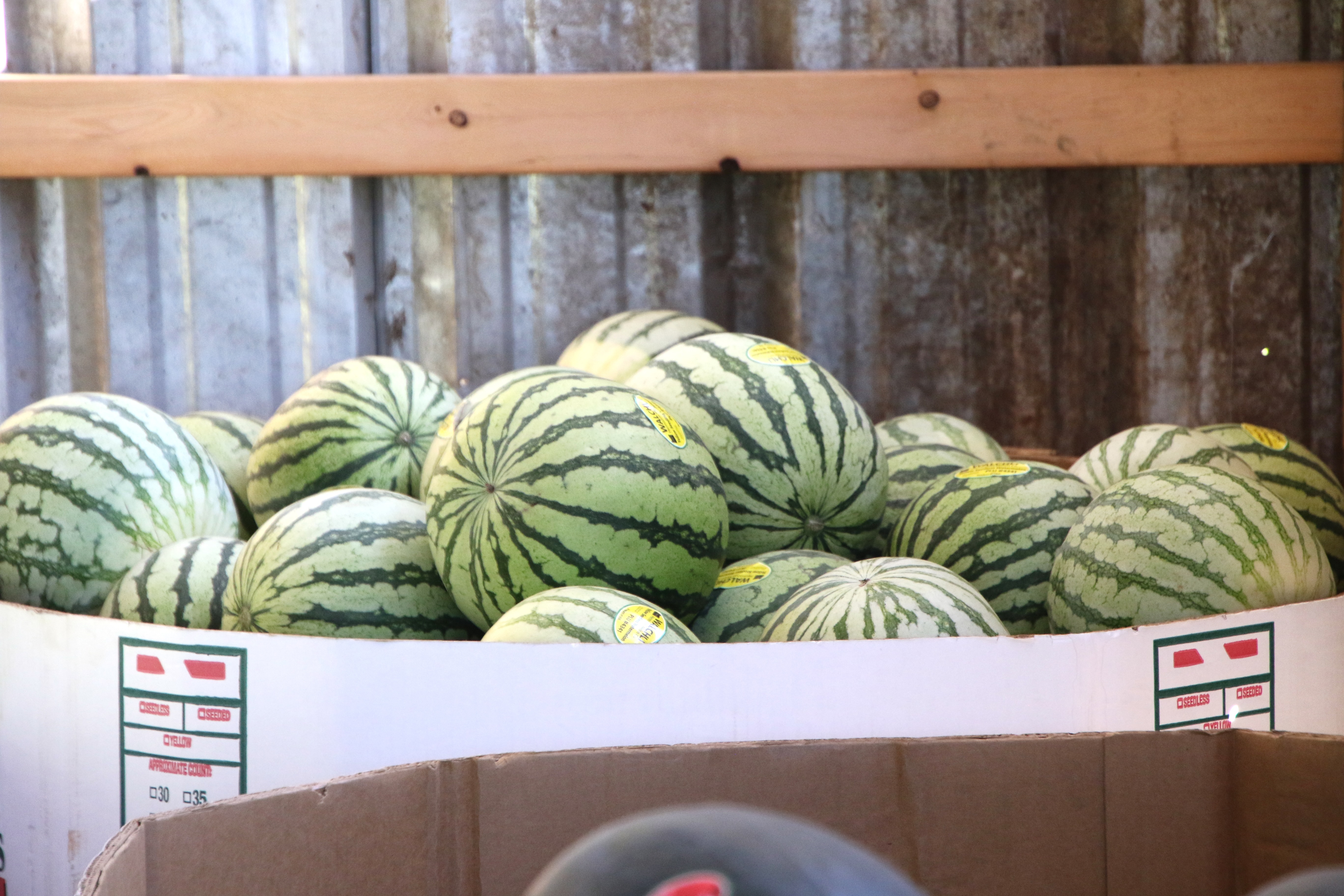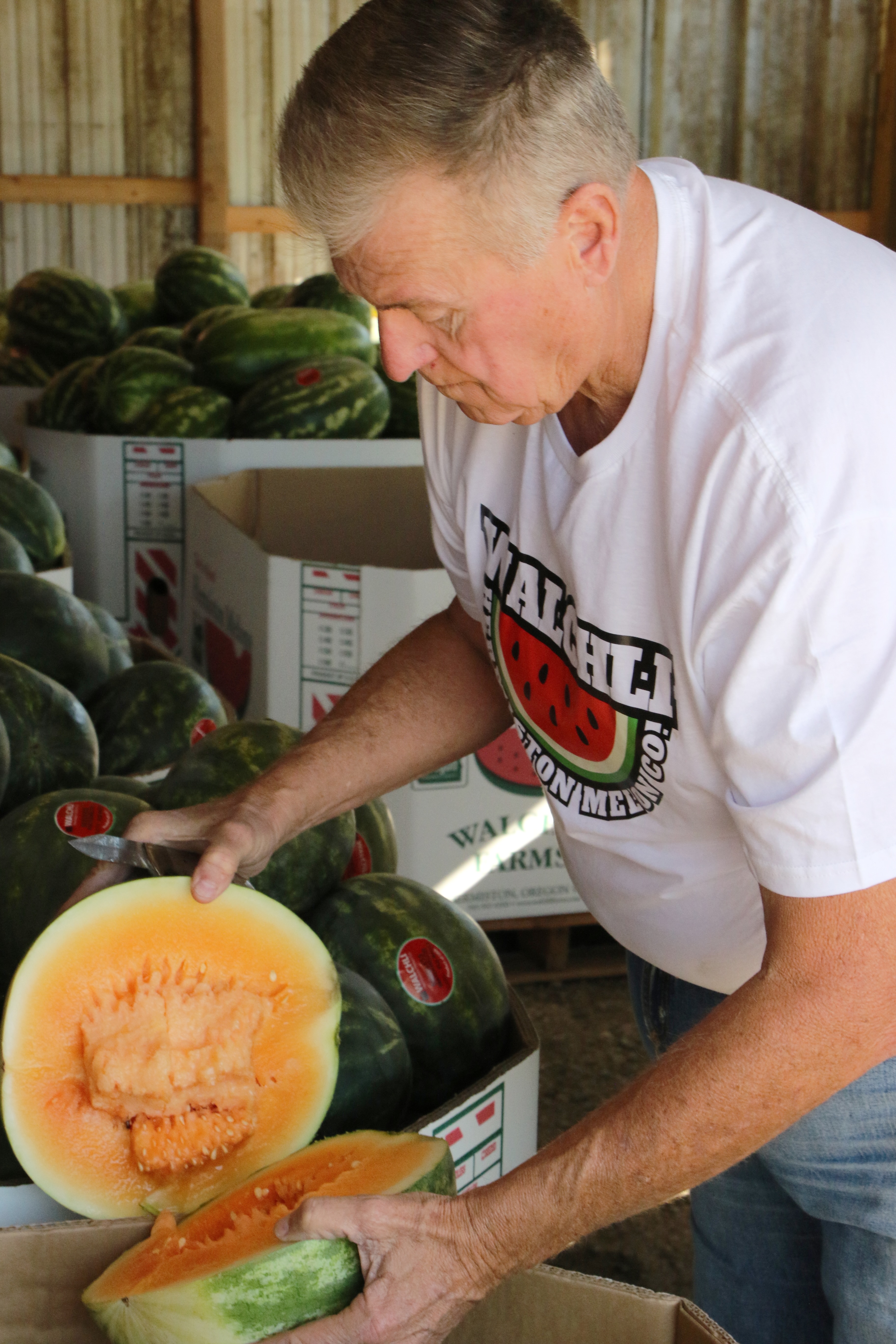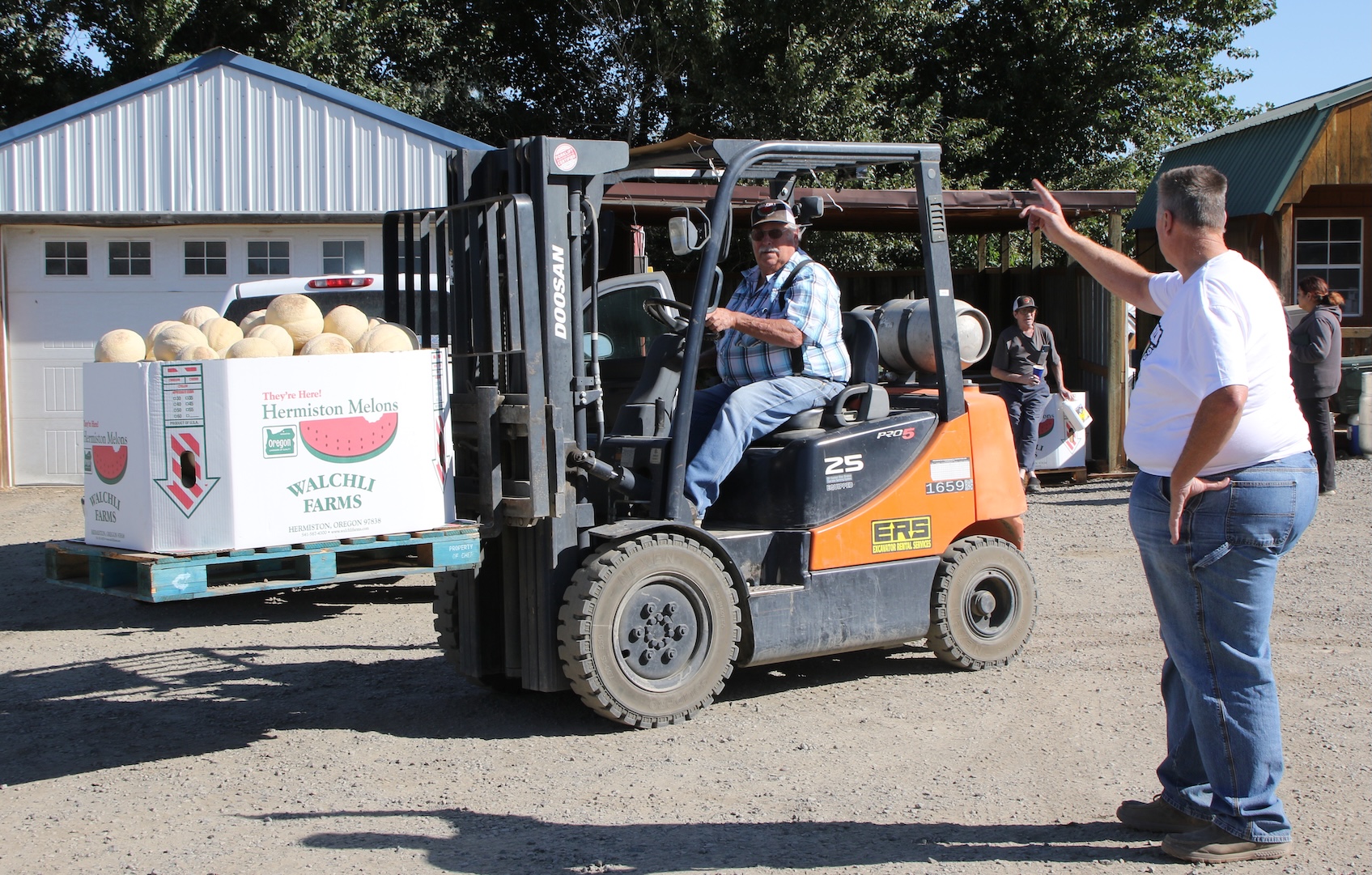Modern watermelons give consumers array of size, color options
Published 6:00 am Monday, August 4, 2025





HERMISTON — A few decades ago, watermelon seemed an almost uniformly large fruit in the U.S., but now there’s an array of sizes, rind colors and flesh hues for adventurous consumers — and 90% of the market is seedless, according to the U.S. Department of Agriculture.
New growing techniques also are enhancing the fruit.
“Back in the old days when my dad started, you grew a seeded red watermelon and that’s all you had,” said Bob Walchli, owner of Walchli Hermiston Melon Co.
Trending
“I raise yellow, orange, seeded, four or five types of red seedless, the Black Mambas,” he said.
Black Mamba watermelons, the star fruit for his 65-acre farm in Umatilla County, have an extremely dark rind, are bright red and seedless, and weigh 13-17 pounds.
Their sugar content is so high they won’t sit on store shelves for long, but that’s not a problem, since Walchli and his wife Rachelle Walchli concentrate on direct sales at their farm stand, farmers markets and pop-up events.
Wachli said most of his customers “want to do something they don’t see at the store.”
Along with watermelons, consumers have far more variety for cantaloupes and honeydew, he said.
Walchli also is a partner in his family’s 250-acre Walchli Farm near Hermiston, which focuses mainly on large, red-fleshed melons destined for grocery stores.
Trending
For the most part, watermelons aren’t marketed to consumers by variety like other fruit such as apples, and instead are sold based on characteristics.
A just-right ‘icebox’ size
Carol Miles, a Washington State University horticulture professor, develops new and alternative crops for local farmers.
“I always like to say new-to-us crops,” Miles said.
What might be unusual to American consumers may have existed for hundreds of years in other cultures, she said.
Her projects include edamame, baby corn, wasabi and tea.
She’s also conducted tests on more than 100 varieties of “icebox watermelons” that can be grown east or west of the Cascade Range.
“Twenty-five years ago, icebox melons didn’t really exist in the main market in the U.S.,” Miles said, but now they can be found in most grocery stores throughout the year.
Icebox watermelons, sometimes called mini melons, range from about 6-12 pounds — larger than personal melons but smaller than picnic-sized watermelons that remain the norm.
Miles said that size offers convenience for shoppers, who can eat them individually or with families.
For growers, icebox watermelons’ quick maturity allows for two to three crops every season, extending the harvest.
While icebox melons come in many colors, most Americans aren’t open to peach or yellow hues, even if those taste the same.
“We’ve just been trained here that watermelon has to be red,” Miles said.
Growing techniques enhance fruit
Pollock & Son, another Hermiston-area grower, mainly grows seedless, red-fleshed picnic-sized watermelons that are sold in major Northwest supermarkets.
The only reason the company grows seeded melons is for pollination, said manager Bryce Pollock.
While the watermelons look more traditional, new growing techniques have improved the fruit.
“We’ve started grafting them now, so we’ll put them on rootstock, and that completely changes the characteristics of the interior flesh,” Pollock said.
The heart of the watermelon can be so firm it eats almost like an apple, he said.
Grafting onto rootstock also results in longer shelf life and far more disease resistance, Pollock said.
Tough market for melons
Experts said this season is going well in terms of production and yield, but market factors are another matter.
Pollock said there’s a surplus of watermelons, but concerns about inflation and the economy have caused them to be viewed as a luxury item in supermarkets.
Industry insiders said picnic watermelons have a high price tag but pencil out to a value purchase.
Chris McNamee, president of Botsford & Goodfellow, a watermelon broker, said local watermelon demand seemed down due to increased competition in recent years.
Watermelon prices also have cratered, according to the USDA.
With labor, input and equipment costs going up and prices dropping, “It’s not a good correlation,” McNamee said.
Hermiston melons have a reputation of being very sweet because of growing conditions, and the local industry is doing a push to build brand identity.
“We’re lucky that we have quite a following with Hermiston watermelons. We tend to get a better return than other areas, but overall the market is very depressed,” McNamee said.


